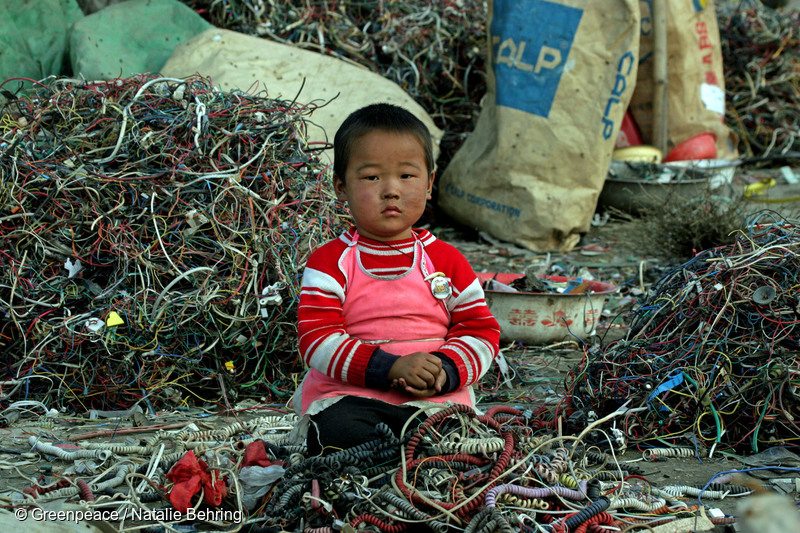Greening our gadgets for a sustainable future
Every year, hundreds of thousands of old computers and mobile phones are disposed of unsustainably. Thousands more are exported—often illegally—from Europe, the U.S. and other industrialized countries to Asia. There, workers at scrap yards—some of whom are children—are exposed to a hazardous mix of toxic chemicals and poisons.

The rate at which these mountains of obsolete electronic products are growing will reach crisis proportions unless the electronics corporations making and selling these devices own up to their responsibilities.
It is possible to make clean, durable products that can be upgraded, recycled, or disposed of safely and don’t end up as hazardous waste in someone’s backyard.
How Big Is the E-Waste Problem?
The amount of electronic products discarded globally has skyrocketed recently, with 20 to 50 million metric tons generated every year. If the estimated amount of e-waste generated every year were put into containers on a train, it stretch all the way around the world.
Electronic waste now makes up 5 percent of all municipal solid waste worldwide—nearly the same amount as all plastic packaging—but it is much more hazardous. Not only the Western world generates e-waste: Asia discards an estimated 12 million metric tons each year.
The e-waste problem is growing because people are upgrading their mobile phones, computers, televisions, audio equipment and printers more frequently than ever before. Mobile phones and computers are replaced most often. In Europe, e-waste is increasing at 3 to 5 percent per year, almost three times faster than the total waste stream. Developing countries are also expected to triple their e-waste production over the next five years.
Solutions
Manufacturers of electronic goods—which benefit from sales of their products—should take responsibility for them from production through to the end of their lives. To prevent an e-waste crisis, manufacturers must design clean electronics with longer lifespans that are safe and easy to recycle and will not expose workers and the environment to hazardous chemicals.
Here’s what they can do:
- Clean up. Electronics manufacturers must stop using hazardous materials. In many cases, safer alternatives already exist.
- Take back. The taxpayer should not bear the cost of recycling old electronic goods. Manufacturers should take full life cycle responsibility for their products and, once they reach the end of their useful life, take their goods back for re-use, safe recycling or disposal.
And here’s what you can do:
- Support companies that make clean products. Before you make a purchase, consider checking out our Guide to Greener Electronics.
- Think twice before buying whether you really need a new device.
- Return your equipment to the manufacturer when you have finished with it.
